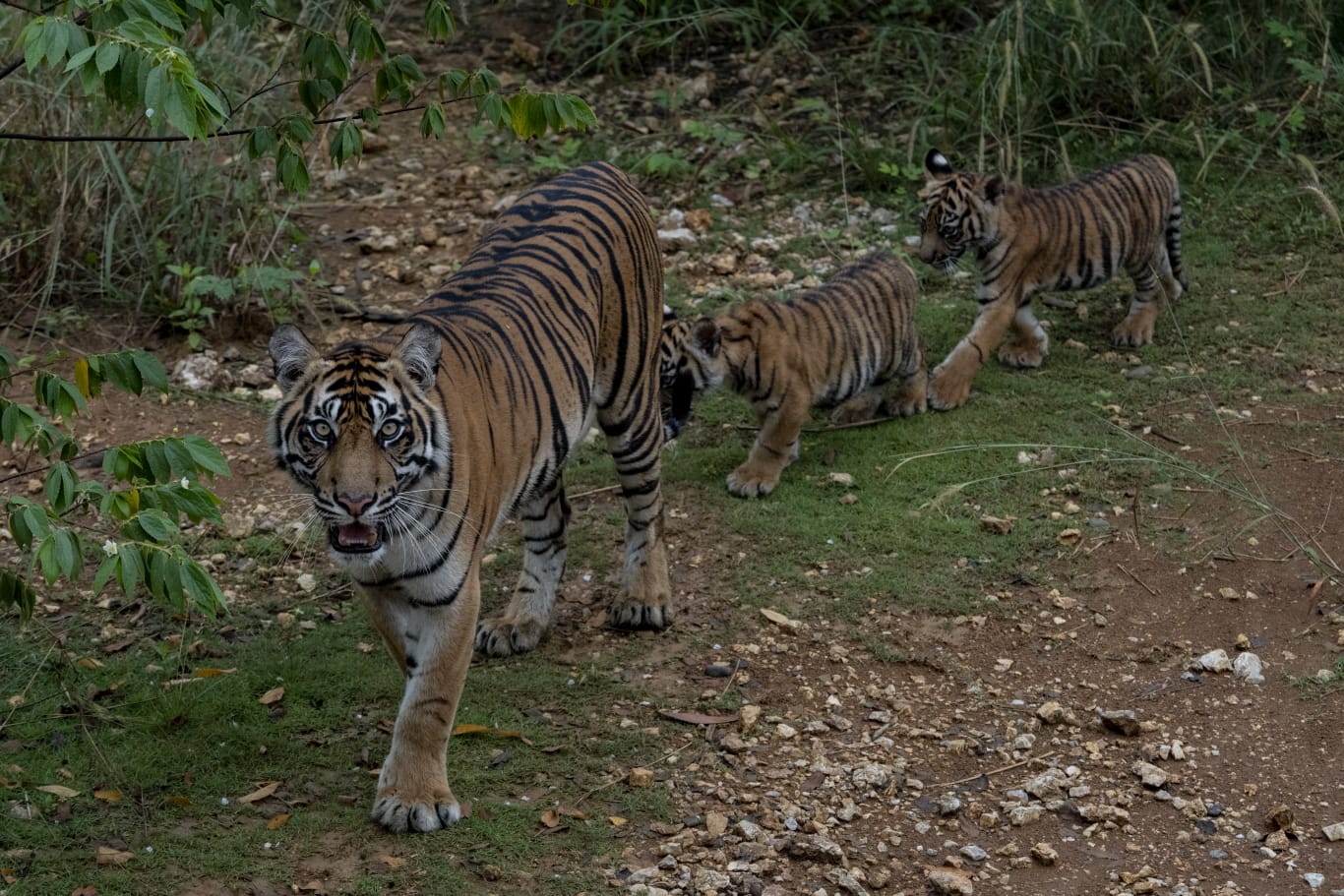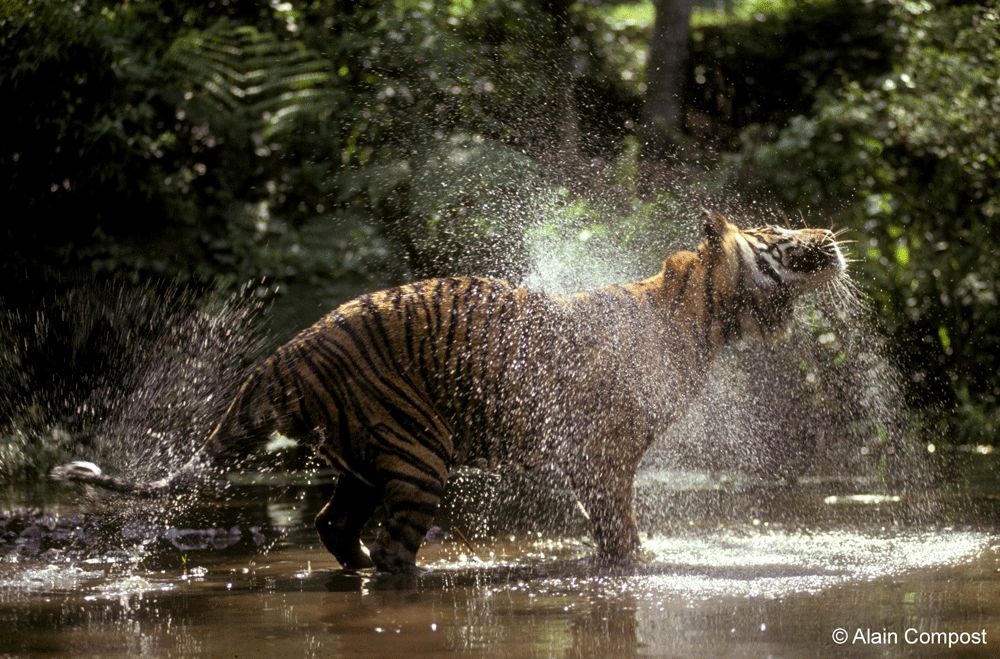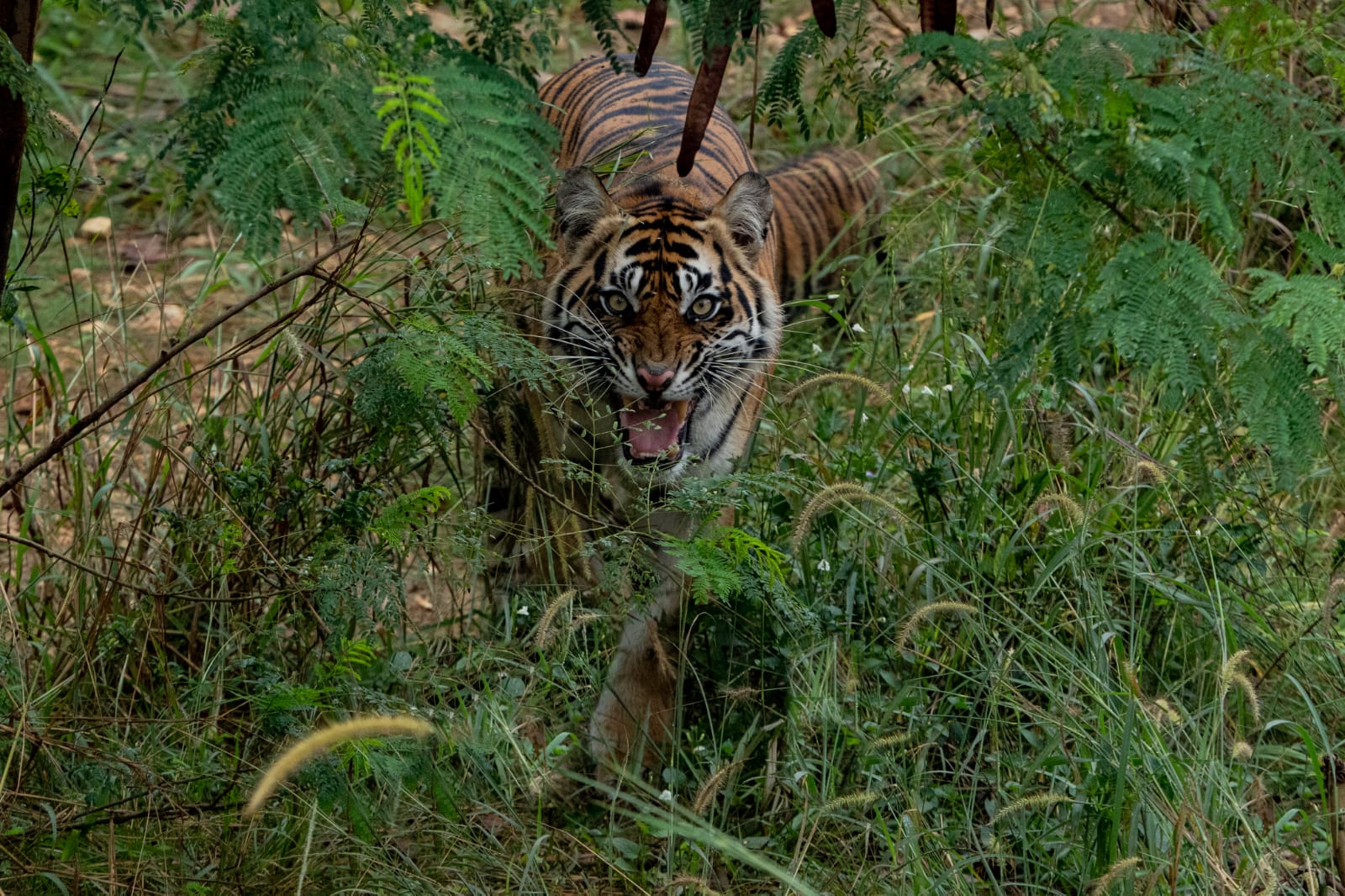SUMATRA WILDLIFE
SANCTUARY

Sumatra Tiger Rescue, Rehabilitation and Release Sanctuary of Barumun, Sumatra.
MISSION
We are an endowment with a mission to protect Sumatran Wildlife from human conflict and deforestation. Operating since 2015, in the buffer zone between Barumun and the village of Batu Nanggar in the North Padang Lawas Regency of North Sumatra, Indonesia with the guidance of the Indonesia Ministry of Environment and Forestry and Bodhicitta Foundation. Seven Sumatran Tigers have been restored to the forest under our stewardship, with more currently under our care.
The Sumatran Tiger are a critically endangered species, with less than 500 individuals remaining in the wild. With your help we are working to ensure the survival of this majestic Datuk of the Forest. To the local people in Padang, Sumatran Tigers are known as Inyiak-- Grandmother for their role as ancient and auspicious ancestors of the forest. We work to keep tigers at home in the forest by protecting their habitat and preventing their extinction.
CURRENT RESIDENTS
Gadis
Status: Rescue. Date: 2016. Location: Batang Gadis National Park, Mandailing Natal Regency, North Sumatra. She was seriously injured by a snare on her right front leg, requiring amputation. Due to the amputation of her right leg, it is feared that Gadis will not be able to survive in the wild. She will remain as mating parent with Monang in the Barumun Tiger Sanctuary enclosure as we provide support and comfort for her injury and offer the best possible palliative care for her condition.
Monang
Satus: Rescue. Date: 2017. Location: Dolok Parmonangan Village, District. Dolok Pangaribuan, Kab. Simalungun, North Sumatra. Wounds on both front legs. The right front leg suffered a serious injury due to a snare. The wound was serious enough to cause Monang's right front leg to be permanently disabled preventing him from surviving in nature. He will remain as a mating parent at the Barumun Tiger Sanctuary where we strive to provide as fufilling and rewarding life as possible for him and his mating partner Gadis.
Bisma
Status: Restoration. Birthdate: January 23, 2022. Born: Barumun Sumatran Tiger Sanctuary, North Sumatra. Tiger born in good, health condition from parents Monang and Gadis. Bisma enjoys exploring his habitat at night and lounging under the shady canopy of undergrowth during the day. His favorite color is green and he enjoys playing with his brother and swimming in the pond. Expected release date 2026.
Albanta
Status: Restoration. Birthdate: January 23, 2022. Born: Barumun Sumatran Tiger Sanctuary, North Sumatra. Tiger born in good, health condition from parents Monang and Gadis. Albanta enjoys exploring his habitat at night and lounging under the shady canopy of undergrowth during the day. His favorite color is orange and he enjoys playing with his brother checking out the local birds and hopes someday to study botany in his anscesetral forest. Expected release date 2026.
Senja
Status: Rescue and Rehabilitation. Date: December 21, 2022. Location: Aras Napal Kiri Hamlet, Bukit Mas Village, District, Besitang, North Sumatra. Senja was rescued with abrasions on several parts of her body including wounds from a boxtrap. Villagers reported her to the government for disturbing them by hunting their livestock property. She has currently recovered from her injuries and is awaiting governemnt approval to be rereleased to the forest.

ABOUT SUMATRAN TIGERS
The Sumatran tiger is a population of Panthera tigris sondaica. They are the only surviving tiger population in the Sunda Islands, where the Bali and Javan tigers were already to extinction by hunting, human conflict and deforestation by the 1980s.
The Sumatran tiger has particularly long hair around the face, thick body stripes, and a broader and smaller nasal bone than other island tigers. They have short and smooth hair and present smaller bodies than tigers from mainland Asia. Presenting at 100 to 140 kg (220 to 310 lb for males and 75 to 110 kg (165 to 243 lb) for females. As a species, the Sumatran Tiger have existed for 2.7 - 3.7 million years.

Sumatran tigers prefer lowland and hill forests, where up to three tigers live in an area of 100 km2 (39 sq mi). They strongly prefer uncultivated forests and avoid plantations of acacia and oil palm. Within natural forest areas, they tend to use areas with higher elevation, lower annual rainfall, farther from the forest edge, and closer to forest centres. They prefer forest with dense understory cover and steep slope, and they strongly avoid forest areas with high human influence in the forms of agricultural encroachment and settlement.
Nine large prey species have been identified including: great argus, pig-tailed macaque, Malayan porcupine, Malayan tapir, banded pig, greater and lesser mouse-deer, Indian muntjac, and Sambar deer.

THREATS TO TIGERS
Major threats include human-tiger conflict over livestock, habitat loss due to expansion of agricultural plantations, prey-base depletion, and illegal trade of tigers for the domestic and international markets as pets, entertainment, trophies, traditional remedies and household decorations.
Tigers need large contiguous forest blocks to thrive. Between 1985 and 1999, forest loss within Bukit Barisan Selatan National Park averaged 2% per year. A total of 661 km2 (255 sq mi) of forest disappeared inside the park, and 318 km2 (123 sq mi) were lost in a 10-km buffer, eliminating forest outside the park. Lowland forest disappeared faster than montane forest, and forests on gentle slopes disappeared faster than forests on steep slopes. Most forest conversions resulted from agricultural development, leading to predictions that by 2010, 70% of the park will be in agriculture. Camera-trap data indicated avoidance of forest boundaries by tigers. Classification of forest into core and peripheral forest based on mammal distribution suggests that by 2010, core forest area for tigers will be fragmented and reduced to 20% of the remaining forest.
Sumatra's largest tiger population in Kerinci Seblat National Park is threatened by a high rate of deforestation in its outer regions. Drivers are an unsustainable demand for natural resources created by a human population with the highest rate of growth in Indonesia, and a government initiative to increase tree-crop plantations and high-intensity commercial logging, which ultimately leads to forest fires. The majority of the tigers found in the park were relocated to its center where conservation efforts are focused, but issues in the lowland hill forests of the outskirts remain. While being a highly suitable tiger habitat, these areas are also heavily targeted by logging efforts, which substantially contributes to declines in local tiger numbers.

The expansion of plantations is increasing greenhouse gas emissions, playing a part in anthropogenic climate change, thus further adding to environmental pressures on endangered species. Climate-based movement of tigers northwards may lead to increased conflict with people. From 1987 to 1997, Sumatran tigers reportedly killed 146 people and at least 870 livestock. In West Sumatra, Riau, and Aceh, a total of 128 incidents were reported; 265 tigers were killed and 97 captured in response, and 35 more tigers were killed from 1998 to 2002. From 2007 to 2010, the tigers caused the death of 9 humans and 25 further tigers were killed.
In 1997, an estimated 53 tigers were killed by poachers and their parts sold throughout most of northern Sumatra. Numbers for all of Sumatra are likely to be higher. Farmers killed many of the tigers to prevent livestock losses. They sold them to gold and souvenir shops, and pharmacies. In 2006, wildlife markets were surveyed in 28 cities and nine seaports in seven Sumatran provinces; 33 of 326 retail outlets offered tiger parts like skins, canines, bones, and whiskers. Tiger bones fetched the highest average price of US$116 per kg, followed by canines. There is evidence that tiger parts are smuggled out of Indonesia. In July 2005, over 140 kg (310 lb) of tiger bones and 24 skulls were confiscated in Taiwan in a shipment from Jakarta.
In 2013–2014, Kerinci Seblat National Park experienced an upsurge in poaching, with the highest annual number of snare traps being removed for a patrol effort similar to previous years. Evidence is scarce and misunderstood on whether the strategies implemented to diminish poaching are succeeding despite the investment of millions of dollars annually into conservation strategies.

SUPPORT
Our operations require a continual influx of donations and resources for equipment incuding; Construction of Habituation, Shelter, Securing Land, Operational Transportation, Motorbikes, Trucks, Medical Expertise, Medicine, Medical Supplies, Medical Transport Services, Helicopter Lease, Fuel and Piloting, Transport Carriers, Government Advocacy, Legal Services, Monitoring CCTV and Infrared Cameras, Tracking Drones, Night Vision, Tagging and MicroGPS Medical Services, Support Staff Wages, Food and Accommodations, Insurance, Internet Connectivity, Construction Supplies, Water Treatment and Filtration Systems.
We are continually seeking research partnerships and personel volunteers for the following; Daily Activity Support, Cleaning, Monitoring, Feeding, Research Associates, Ethology, Zoologist, Nutritionist, Veterinarian, Environmental Studies Experts, Conflict Mitigation Researchers, Community Communication Specialists, Release Preparation Support Staff, Government Advocates, Solicitors, Legal Counsel, Rangers and Representatives.
We wish to invite and collaborate with; Documentary Directors, Animal Welfare Advocates, Environmental Activists, Social Media Campaign Managers, Content Creators and Fundraising Event Organizers.
How can I help the Sumatran Tiger?
Donate to our sanctuary! Adopt a tiger! Spread Awareness! Tell your friends and share on social media.
Go Vegan! Really! The number one threat to Sumatran Tigers is Deforestation and Human Conflict. Forests in Sumatra are destroyed for agriculutral activities, many which raise feed for livestock, for unnecessary and ineffeciant luxury food products. Bypass this consumer choice by eating a plant-based diet and promoting the philosophy of non-exploitation of animals. Many tigers are targeted and killed because their natural habitat has been destroyed and replaced with livestock pasture which draw the tigers to the edges of their prefered forest homes where they are poisoned, trapped and killed to protect domestic animals kept as property. In addition, poachers trap tigers for the illegal trade of animals as violent entertainment, domestic pets, and their body parts. Spreading the vegan philisophical worldview that humans should not exploit but protect animals is the only lasting and permanent solution to tiger human conflict. Protect animals by learning more about veganism and it's beneficial effects on all animals wild and domestic by visiting The Vegan Society website and taking The Liberation Pledge today.

VOLUNTEER:
info「Ⓐ」sumatratiger.org
SHARE
Send, Show, Tag or Scan the QR Code below to share with others.

#SumatraTigerSanctuary